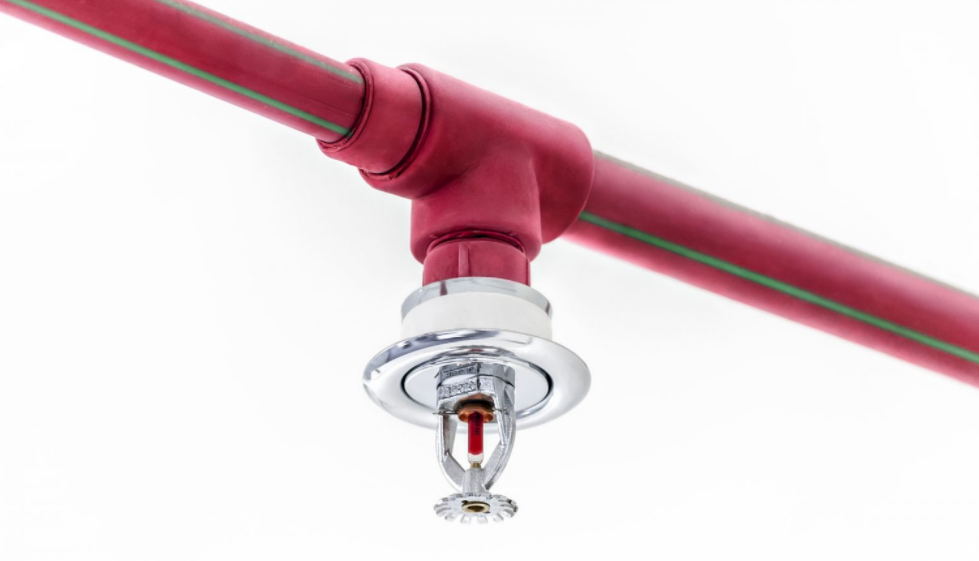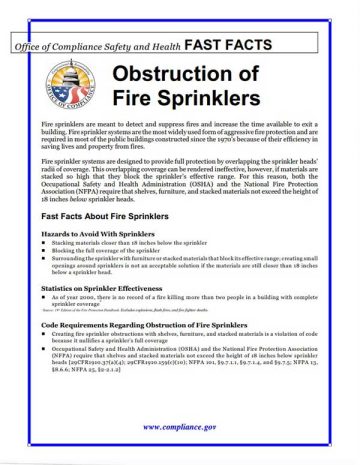Fire sprinklers are meant to detect and suppress fires and increase the time available to exit a building. Fire sprinkler systems are the most widely used form of aggressive fire protection and are required in most of the public buildings constructed since the 1970’s because of their efficiency in saving lives and property from fires.
Fire sprinkler systems are designed to provide full protection by overlapping the sprinkler heads’ radii of coverage. This overlapping coverage can be rendered ineffective, however, if materials are stacked so high that they block the sprinkler’s effective range. For this reason, both the Occupational Safety and Health Administration (OSHA) and the National Fire Protection Association (NFPA) require that shelves, furniture, and stacked materials not exceed the height of 18 inches below sprinkler heads.
Fast Facts About Fire Sprinklers
Hazards to Avoid With Sprinklers
- Stacking materials closer than 18 inches below the sprinkler
- Blocking the full coverage of the sprinkler
- Surrounding the sprinkler with furniture or stacked materials that block its effective range; creating small openings around sprinklers is not an acceptable solution if the materials are still closer than 18 inches below a sprinkler head.
Statistics on Sprinkler Effectiveness
- As of year 2000, there is no record of a fire killing more than two people in a building with complete sprinkler coverage*
* Source: 19th Edition of the Fire Protection Handbook. Excludes explosions, flash fires, and fire fighter deaths.
Code Requirements Regarding Obstruction of Fire Sprinklers
- Creating fire sprinkler obstructions with shelves, furniture, and stacked materials is a violation of code because it nullifies a sprinkler’s full coverage
- Occupational Safety and Health Administration (OSHA) and the National Fire Protection Association (NFPA) require that shelves and stacked materials not exceed the height of 18 inches below sprinkler heads [29CFR1910.37(a)(4); 29CFR1910.159(c)(10); NFPA 101, §9.7.1.1, §9.7.1.4, and §9.7.5; NFPA 13, §8.6.6; NFPA 25, §2-2.1.2]

